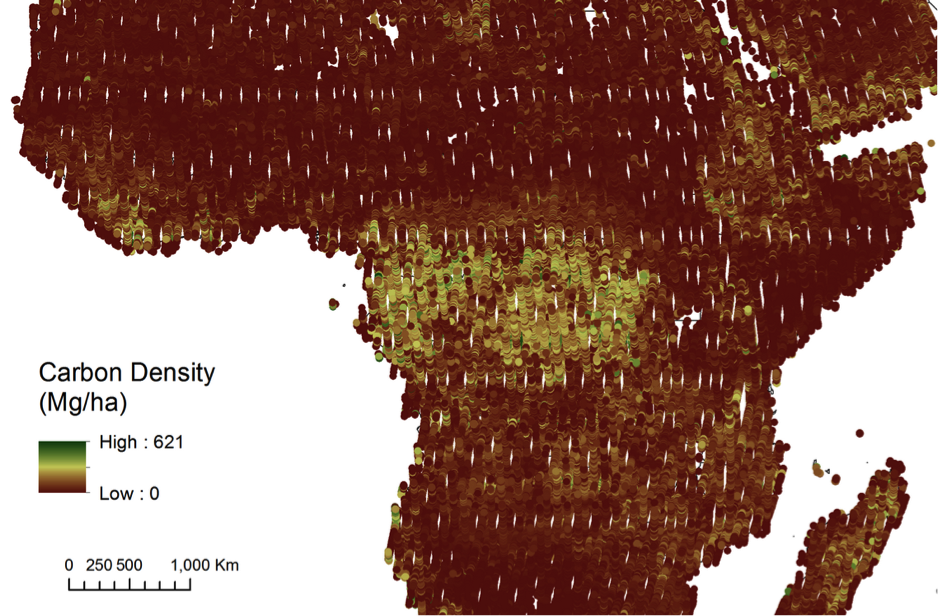
Principal Investigator:
Sponsor:
Time period:
Researchers:
Project Description:
This project is aimed to help answer one of NASA’s Big Research Questions: How is the global Earth system changing? We propose to use the multi-sensor fusion of satellite data “to quantify change” within the Earth’s terrestrial system, specifically forest structure and change. The synoptic nature of satellite-based earth observation data enables the consistent characterization of forest cover across space and over time. Information on forest extent and change is necessary for carbon accounting efforts as well as for parameterizing global-scale biogeochemical, hydrological, biodiversity and climate models. Due to the vast area that must be examined, earth observation data offer one of the few viable information sources suitable for global-scale monitoring of forest dynamics.
Data from NASA’s MODerate Resolution Imaging Spectroradiometer (MODIS) have been used to estimate global forest cover in the form of the Vegetation Continuous Field of percent tree cover (Hansen et al. 2003), a standard product of the MODIS Land Science Team. The method for creating the VCF tree cover layer was later adapted for estimating forest cover change. However, coarse resolution data such as MODIS lack sufficient spatial detail to provide reliable map-based estimates of forest extent and change. In order to overcome this limitation, MODIS time-series data and derived products have been integrated with Landsat time-series data sets.
Landsat data have the appropriate spatial resolution for monitoring global change. MODIS generic forest cover mapping efforts have been augmented to create 250m cover maps of mature forest stands that can be taken as consistent dark targets. These targets are used to pre-process and characterize Landsat timeseries data sets (Hansen et al. 2008; Potapov et al. 2012). The integrated use of MODIS and Landsat enables the mass-processing of the Landsat archive. The method relies on MODIS-driven normalization procedures to automatically generate per-Landsat pixel cloud and shadow assessments and subsequent forest extent and change characterizations. Global-scale mapping of forest extent and change at Landsat scale is thus feasible using this integrated MODIS and Landsat methodology.
Another global source of information available for quantifying forests is data from the Geoscience Laser Altimetry System (GLAS) instrument on board the Ice, Cloud, and Elevation Satellite (ICESat). Unlike the passive optical MODIS and Landsat sensors, GLAS is a waveform sampling lidar sensor originally designed for observation of ice sheets (Zwally 2002). Lidar metrics have also been used extensively to characterize vegetation structure (Lefsky et al. 2005; Sun et al. 2008). Because lidar metrics are partly determined by the amount of lidar energy that reaches the ground surface, they are sensitive to both vegetation vertical structure and canopy density (canopy cover) (Drake et al. 2003). As a result, they are related to a range of canopy structure attributes and above-ground biomass (Drake et al. 2002; Lefsky et al. 2002). Moreover, lidar canopy structure metrics have been shown to be important predictors of breeding bird habitat selection and species diversity (Goetz et al. 2007, 2010).
The main objective of this project is to further the current integrated MODIS/Landsat method by incorporating data from GLAS. For this study, metrics derived from GLAS, such as canopy height and height of median energy (HOME), will be tested for deriving time-series estimates of forest structure within the current MODIS-Landsat operational algorithm. The method will extend the forest structure information content of GLAS to the time and space domains of MODIS and Landsat. In summary, MODIS provides consistent time-series inputs and results that enable the radiometric normalization and mass-processing of the Landsat archive, to be calibrated for forest structure characterization using samples of GLAS data.

